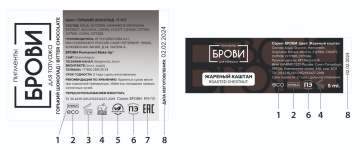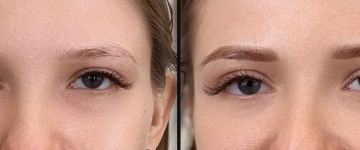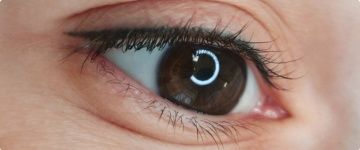Video from Anna Kutsevolova
Organic and Inorganic PMU Pigments
Pigments for permanent make-up are divided into organic and inorganic.
- Organic pigments are products of organic synthesis, carbon compounds
- Inorganic pigments are salts or oxides of metals
Production of inks for tattoos and PMU does not involve pigments obtained by grinding, enriching and otherwise affecting rocks. Inorganic pigments are not mineral.
And you need to understand that classifying pigments into organic and inorganic is not the same as classifying inks into organic and inorganic.
BROVI tattoo inks are hybrid
Inks are either completely inorganic or hybrid — consisting of both organic and inorganic components.
BROVI inks are hybrid, and we keep emphasizing that.
There Are No Completely Organic Paints
Many PMU artists sincerely believe that there are completely organic inks. We explain why this is not the case.
A number of countries have an interesting requirement for labels: if the percentage of a certain substance in the composition is below 1%, then this substance is not indicated in the list of ingredients. Thus, you see only those substances the content of which in the composition exceeds 1%.

See Figure 1. Everyone's favorite WF, and randomly selected red color is Red Hot. As you can see in the screenshot from the official SDS, there are no inorganic pigments in the composition. But you and I know that not a single colored ink is made without white. And white is the notorious titanium dioxide (CI 77891)—an inorganic component.
What is wrong here? Nothing. It's just that not everyone knows that besides titanium dioxide, for example, barium sulfate (CI 77120) can be used. Particles of barium sulfate are served as a base of colored inks just like particles of titanium dioxide, but due to the peculiarities of production, the required amount of barium sulfate is almost minimum, and its content is less than 1% in inks that use it as such.
Hence the conclusion: since at least one inorganic component is present in composition of any inks, they cannot be purely organic. All of them are hybrid.
However, completely inorganic inks do exist. More about it here Inorganic pigments for permanent makeup





